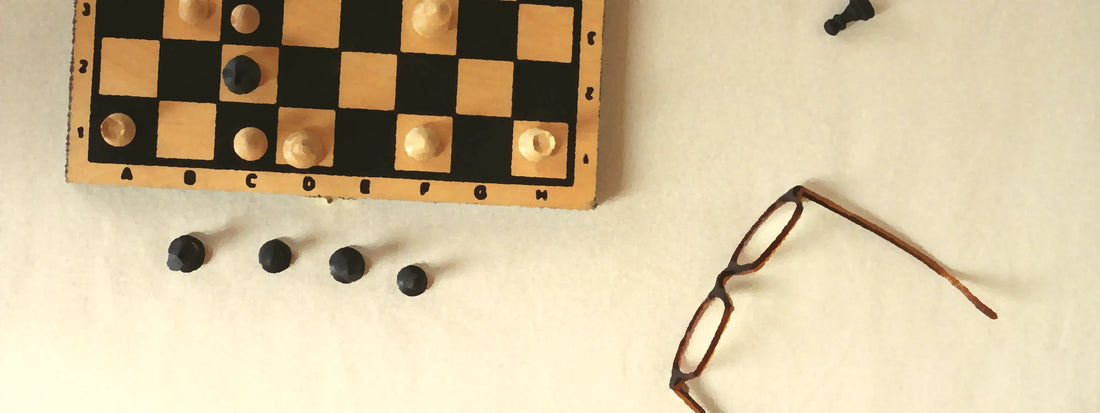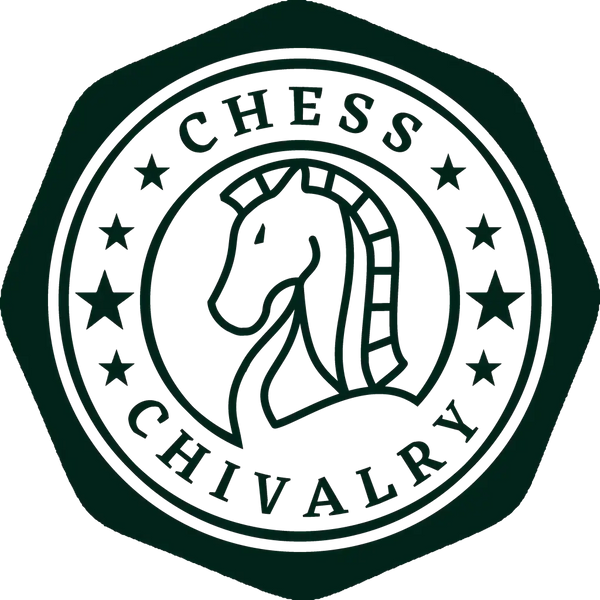
Chess & Tactics: How to Accurately Plan Multiple Chess Moves Ahead
Share
In chess, the ability to calculate is often the deciding factor between victory and defeat. Especially at an intermediate level, when opening knowledge and tactical understanding are solid, the precise calculation of moves becomes the key to success. It’s not only crucial to follow your own plans but also to accurately predict your opponent’s responses and recognize potential traps. Mastering this skill enables you to penetrate complex positions, excel in tactics and combinations, and avoid blunders. But how can you calculate several moves ahead without getting lost or overwhelmed? In this article, I’ll show you proven techniques that will help you improve your calculation skills and sharpen your strategic play.
Calculation in chess is an art form that requires constant practice and a structured approach. Whether you’re an aspiring chess player or want to take your existing skills to the next level, the following tips and techniques will help you calculate more precisely and respond more effectively to your opponent’s moves.
What Does Calculation in Chess Mean?
Calculation in chess goes far beyond simply thinking ahead. It involves not only planning your next move but also a sequence of moves that account for both your actions and your opponent’s. Every position in chess offers a multitude of possible continuations, and the art lies in finding those that lead to the best result.
For beginners, calculation can initially be challenging because they often only consider the next move. They tend to overlook the long-term consequences of their moves, leading to positional losses and tactical errors. More advanced players, however, train themselves to think several moves ahead, set traps, or anticipate tactical blows. However, there’s no fixed rule about how many moves you should calculate in advance—this depends on the complexity of the specific position.
In quiet positions, two or three moves are often enough to make a meaningful decision. In tactically charged situations, where sacrifices or combination attacks are possible, it may be necessary to calculate five or more moves deep. The key is to combine flexibility and precision in your calculation.
The Balance Between Intuition and Calculation
The world’s best chess players, including Magnus Carlsen, are known for their ability to combine intuition and calculation. But what does this mean in practice? Intuition helps you quickly identify potentially strong moves by relying on your experience and positional understanding. Calculation, on the other hand, gives you the necessary confidence to verify the accuracy of these intuitive moves.
In many positions—especially those with few dynamic elements—intuition is often enough to develop a solid plan. In other cases, particularly in tactical situations, precise calculation is essential to avoid mistakes or find the best move.
The challenge is to strike the right balance between intuition and calculation. Over-calculating can lead to overload and confusion, while blindly trusting intuition in tactically complex positions can result in errors. Therefore, it’s crucial to know when to dive deeper into calculation and when your intuition is sufficient to make an informed decision.
How to Improve Your Calculation Skills
The ability to think several moves ahead and correctly assess the consequences of those moves requires focused practice and patience. Many players are aware of the importance of this skill but often don’t know how to train their calculation skills effectively. Below are some of the best methods to gradually refine your calculation abilities.
1. Learn to Follow Variations Systematically
A common mistake in calculation is that players get lost in too many possibilities and lose track of the most relevant variations. To avoid this, you should proceed systematically and focus on the most likely continuations. This can be achieved by applying the "Tree of Analysis" approach, where you imagine that each position branches out like a tree with many branches. Start by following the main branches—the most important moves and their logical responses.
By using this method, you avoid getting lost in too many details and can concentrate your focus on the essential sequences. Another trick is to set "stop signals" in your calculation. When you reach a position you can clearly assess, stop calculating at that point instead of continuing unnecessarily. This saves energy and reduces the risk of getting confused by too many variations.
2. Regularly Train with Tactical Puzzles
Tactic trainers are among the most effective tools for sharpening your ability to calculate precisely. In tactical positions, it’s crucial to accurately foresee moves in order to trick your opponent or avoid falling into a trap yourself. By solving tactical puzzles, you learn to recognize typical tactical patterns and respond to them quickly.
Various platforms, such as lichess.org or chess.com, offer daily new tactical puzzles that help you continuously improve your skills. The key is not only to find the right solutions but also to understand the path that leads to them. Analyze the puzzles after solving them and ask yourself why certain moves work and others don’t.
3. Use "Checks, Captures, and Threats"
To efficiently calculate critical moves in a position, the approach of "Checks, Captures, and Threats" can be a great help. This means that in every position, you first consider the checks, captures, and direct threats from both sides. These moves are often the most forcing and require the highest attention, as they can drastically affect the course of the game.

Caution is advised here: if the white rook captures the bishop, checkmate follows. Black captures the white rook with its own and then moves to e1. The white king cannot escape, as it is forced to the back rank by the black king.
By regularly applying this methodical approach, you will learn to quickly recognize the most dangerous and important moves in a position. This saves time and helps you focus on the crucial aspects of the game.
4. Visualize the Positions in Your Mind
One of the greatest challenges in chess calculation is to keep the positions after several moves clear in your mind. This requires practice, but there are effective methods to train your visual imagination. One of the most proven techniques is blindfold chess, where you try to play without looking at the board. This may seem difficult at first, but over time it becomes easier to visualize positions in your mind.
Another approach is going through chess games from books or databases without using the board. Try to follow the moves in your head and understand how the position develops. These exercises not only strengthen your memory but also improve your ability to calculate several moves ahead.
Common Mistakes in Calculation
Even experienced players are not immune to calculation errors. The most common mistakes occur when players either fixate too much on a single variation or stop their calculation too early. Many players tend to focus too quickly on the first promising move without sufficiently checking the alternatives. To avoid this, it’s helpful to regularly pause and view the position from a broader perspective.
Another common mistake is ending the calculation prematurely without considering all the critical moves and possible responses. This often leads to overlooked tactical blows that can quickly turn the game. To avoid this, always think a few moves ahead in critical moments, even if it doesn’t seem necessary at first glance.
Conclusion: Calculation as the Key to Success
The ability to calculate moves precisely is one of the most valuable skills in chess and separates the best players from the rest. Through regular practice, a structured approach, and the use of the techniques mentioned above, you can continuously improve your calculation skills and elevate your chess game to a new level.
Thank you for your attention and interest in this topic. If you have further questions, feel free to contact me through my contact form. And if you’re interested in chess pieces or tournament chess boards, take a look at my range.
I wish you great joy in the game, success, and rapid progress in learning.
See you soon,
Stefan
